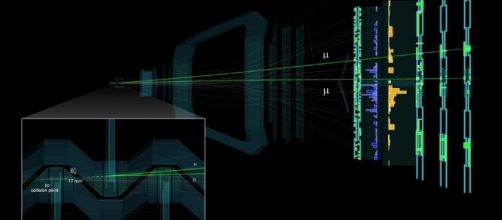In the search for any deviation from the predictions of the standard model of particle physics, scientists have analyzed big data of measurements and experiments regarding the decay of the elementary particles called mesons. This is the best analysis so far depending on a wide range of data.
Physicists long believed that meson decay would include showing that additional particles exist, apart from the well-known elementary particles, leaving some room for theories that go beyond the standard model and predict other particles. The recent measurements and analysis show that experiments are in agreement with the theoretical predictions of modern physics.
Meson decay
When particles collide, they sometimes decay into other particles. In the case of proton collisions, a class of unstable particles called Mesons is produced. Scientists have been looking at a specific particle decay, a particle called Bs0 meson that decays into a muon and an anti-muon, and it was long believed that such decay would unravel a new physics that was not known to exist.
Particle collisions are constantly performed in the Large Hadron Collider, where they make particles move with speed very close to the speed of light and collide with each other. Studying and analyzing a wide class of collisions and measurements, the scientists found that all the data fits perfectly with the data provided by the theoretical framework of the standard model.
The standard model
The best theory of physics, so far, is the standard model of particle physics. the standard model was developed in the 70s, describing all known elementary particles and even predicting the Higgs particle which was discovered at the LHC in 2012.
According to the standard model, when Bs0 mesons decay they produce only muons and anti-muons, which was exactly what was discovered with the right numerical values.
The experimental results agree with the theoretical prediction with accuracy up to nine decimal points, which is a spectacular degree of accuracy.
Despite its success, the standard model is not considered the final theory to most physicists since it leaves many physical phenomena unexplained, like gravity, dark energy and dark matter.
In addition, physicists are still searching for new particles in the large hadron collider, since other theories like supersymmetry predict the existence of a large class of particles. Although, in the recent years, some scientists have come to the conclusion that the LHC will not find other particles.

